I made new backing panels for the ’55 Morgan +4 doors and quarter panels from 1/8″ ABS plastic sheet, and those turned out well. However, having then poked them inside the existing leather trim, I’m having a bit of an existential crisis about the interior.
I have no real expertise in determining whether the interior is original to the car or not, but am guessing it mostly is (which is kind of remarkable, as the car is 65 years old). Every single piece is leather, which is pretty uncommon for post-war British cars, where the “nude rule” applies–if you hopped in the car naked, anything in constant contact with your bod would be leather, and everything else would be made out of Vynide, Rexine, fuzzy cloth, burlap sacks, tar paper, mice, or cling wrap.
Morgan may just have found it less expensive for their low-volume cars and small staff to simply keep one material on-hand and use it for everything. But I’m told the 4/4 models used Vinyl extensively, so who knows.
If this car’s interior has been replaced, said replacement, using leather, is completely out-of-character compared to every other repair on the car–they have all been done as cheaply and half-assedly as possible. (I’m not picturing any owner of this car splurging for leather when something plaid was available on the sale table at JoAnn Fabrics for $5.99.)
All that said, let’s take a look at what we have.

(But first, here’s the new panels. You cannot really tell from this shot, but my new doors are a bit different in shape from the old ones. My doors take a much quicker dive in the armrest curve, which was admittedly eyeballed. This isn’t too terrible a problem except one of the old screw holes will fall where a screw cannot go–right at eye-level, too.)
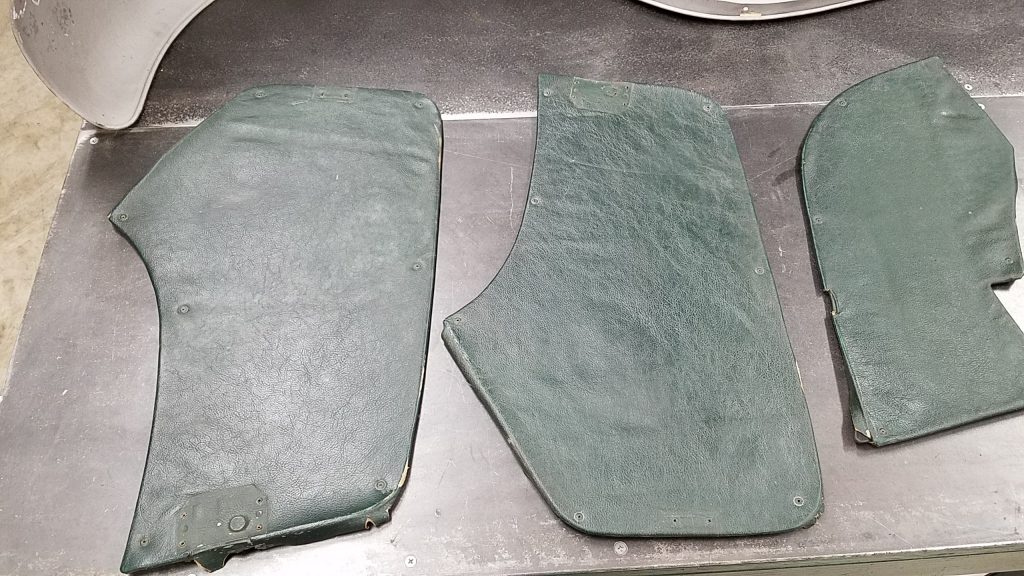
You can see the typical condition of the non-seat leather in the car–it looks to me like it has been “painted” at least once (probably with dye). The finish on all of the leather is pretty uneven, and I would swear there is evidence someone may have tried to dye this all black at some point. This leather is dyed in such a way that the surface is completely sealed. Putting hide food or other conditioners on the face makes no difference; I was able to uncrispify the pieces a bit by applying food to their backs.
The door cover on the right is possibly not the same leather as the rest–that was the door damaged in the accident. There is some edge wear–through the material, in places.
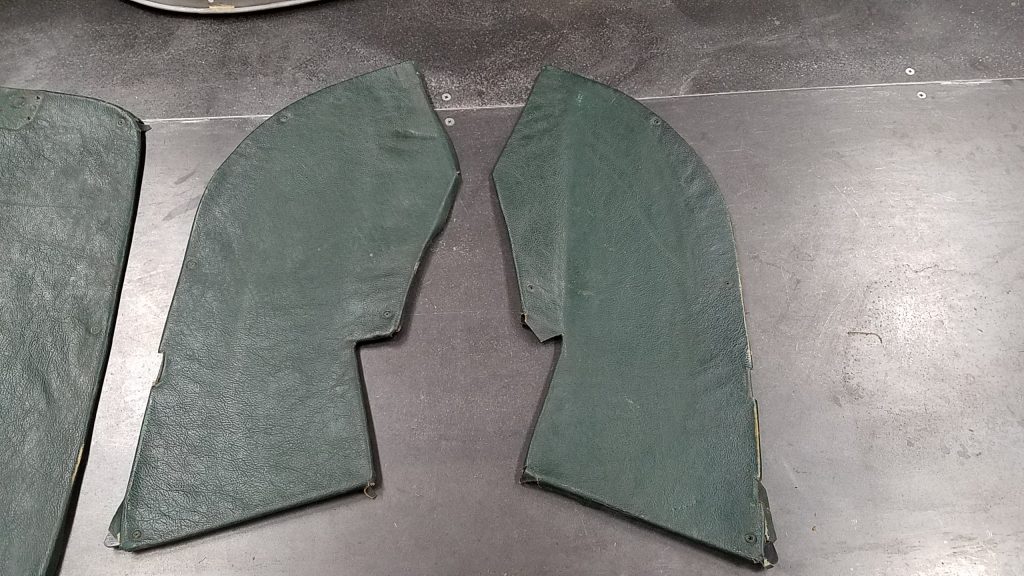
The quarters, shown above, can me made to fit, though the corner-to corner distance is pretty squeaky. Only the front couple of inches is visible when the seat back is in place, but that front edge is pretty worn on both pieces.
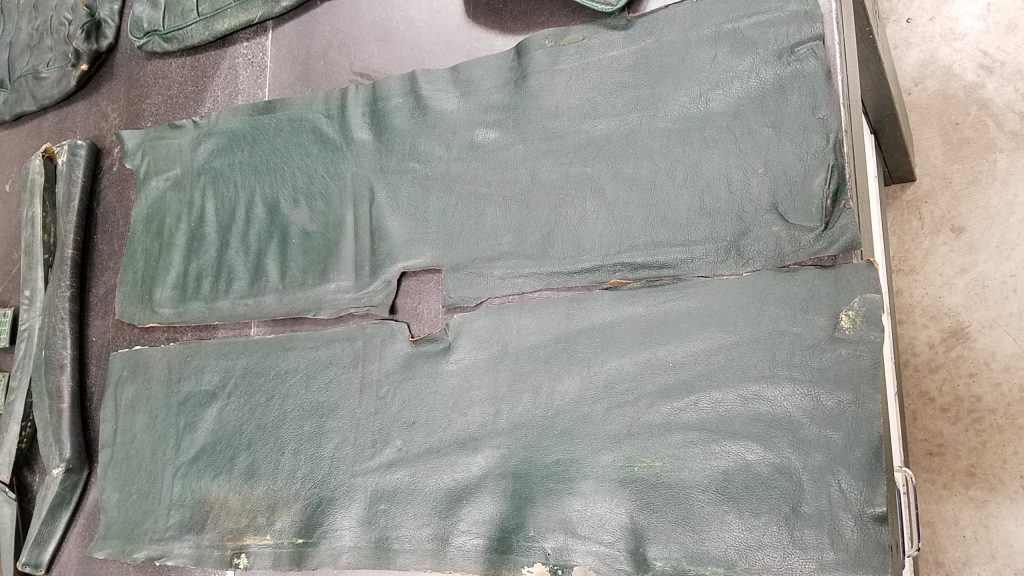
Above are the two sill covers. These were really crispy and I’m not confident that the wrinkles can be stretched out. The notch for the cross-member is forward from where I would think it should be…the front four inches are completely hidden behind the rubber mats, and there is a bare couple inches at the back of the sill if you re-use this notch, which doesn’t make a ton of sense.
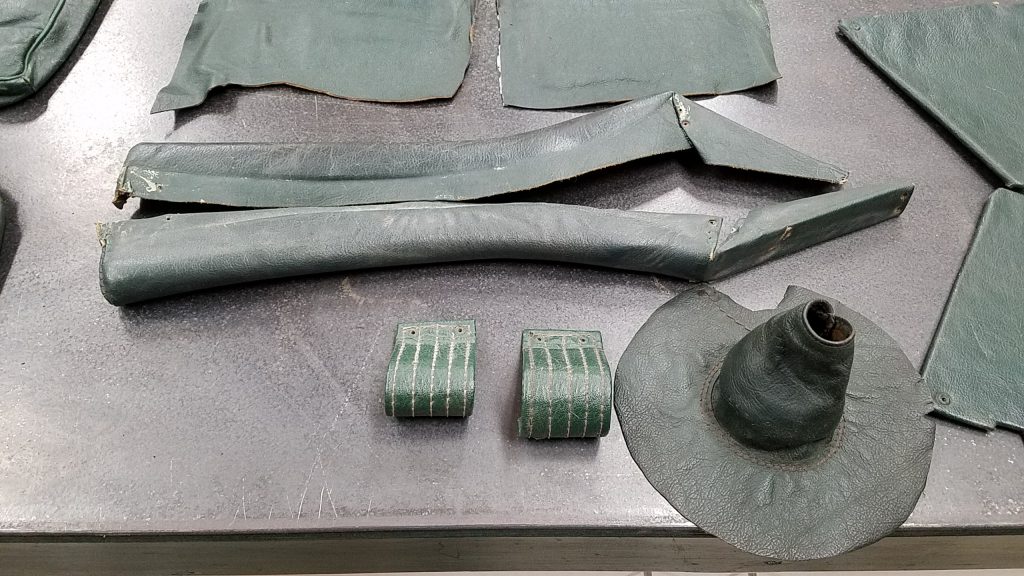
These are the armrests, door check straps, and gearshift boot. The check straps are vinyl over…cardboard, maybe? They are not leather. The armrests are worn from sweaty Morgan owners leaning on them, and the driver’s side is cracking a bit.
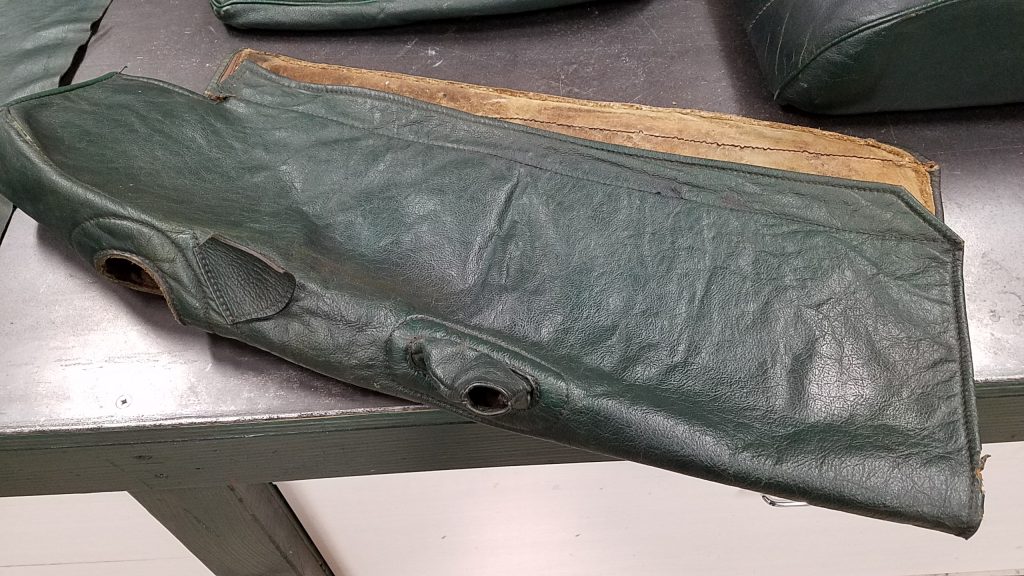

Above is the transmission cover. It had a piece of half-inch jute sewn inside, but that was coming apart, so I removed it with the idea of replacing with modern fake jute. It is torn at the bottom rear of the driver’s side, and you can see the color has gone where the driver’s leg rubs against it. It also doesn’t quite fit, I think by design, but I don’t know why. I would say it should be half an inch longer at the front. It’s fairly crispy but not as terrible as it could be, for sure.

This is the prop-shaft cover, which I already placed into the car. It’s pretty tired but not awful. The front edge has numerous small tears in the bound edge. This is as stretched tight as I could get it, it’s almost as saggy as I am, which is definitely not a good look.
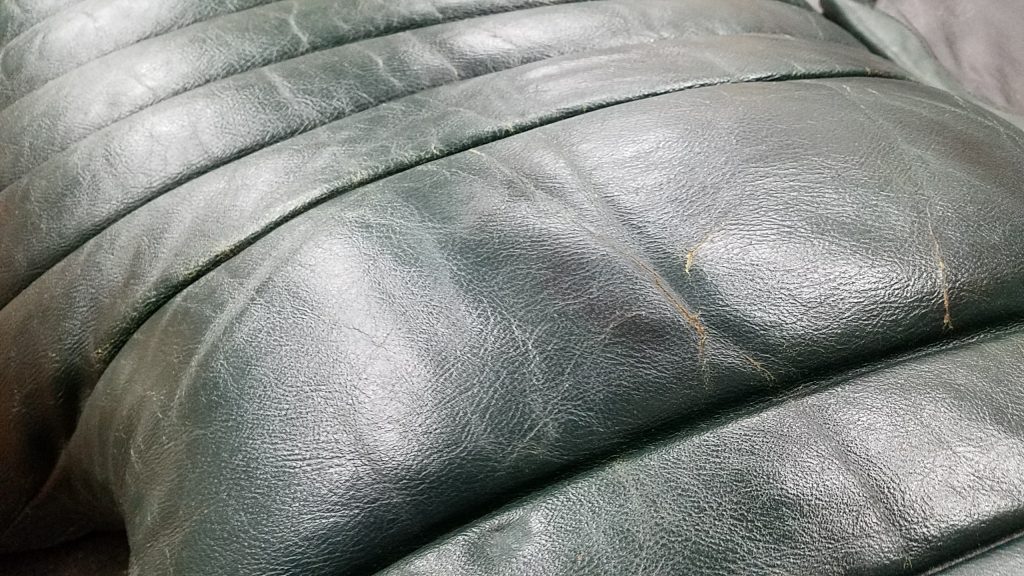
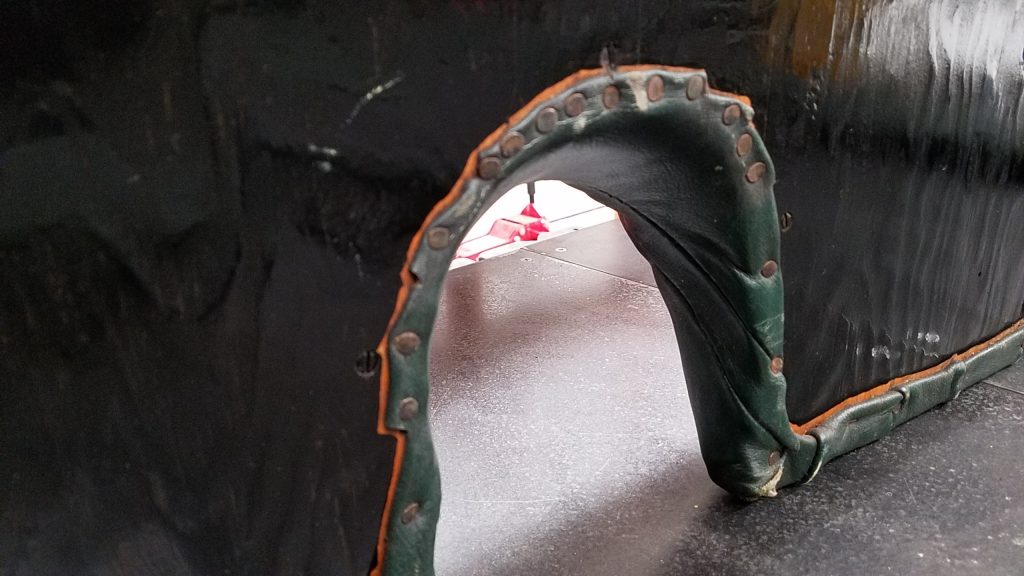
The seat back, also pictured at the top of the page, is OK. It has some cracks in it which I think will be spreading with regular use. I’m showing the back because I have no idea if it’s original. The plywood does not look very British, but it very well could be. The leather on seat backs like this tends to dry out, crack, and disappear entirely at the top edge, as the sun beats down there…which has not happened here.
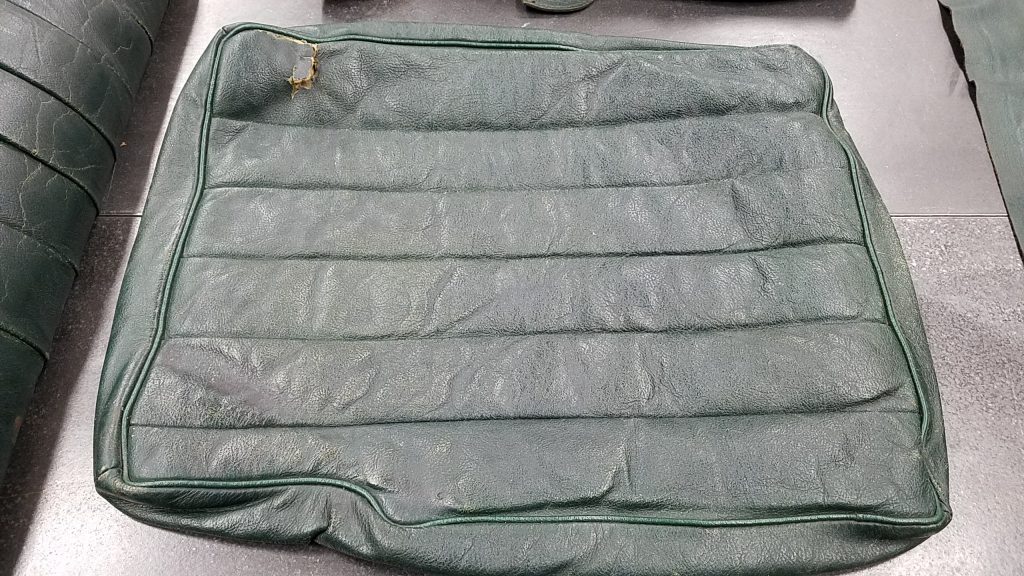
The right-hand squab is OK, after being immersed in about a gallon of Lexol by yrs trly. You can see a tear in the upper left, but if the interior is kept, I don’t really mind–if it can be kept from spreading…frankenstenian stitches, maybe. I don’t think the piece would survive being taken apart and re-assembled, so a new flute is probably out.
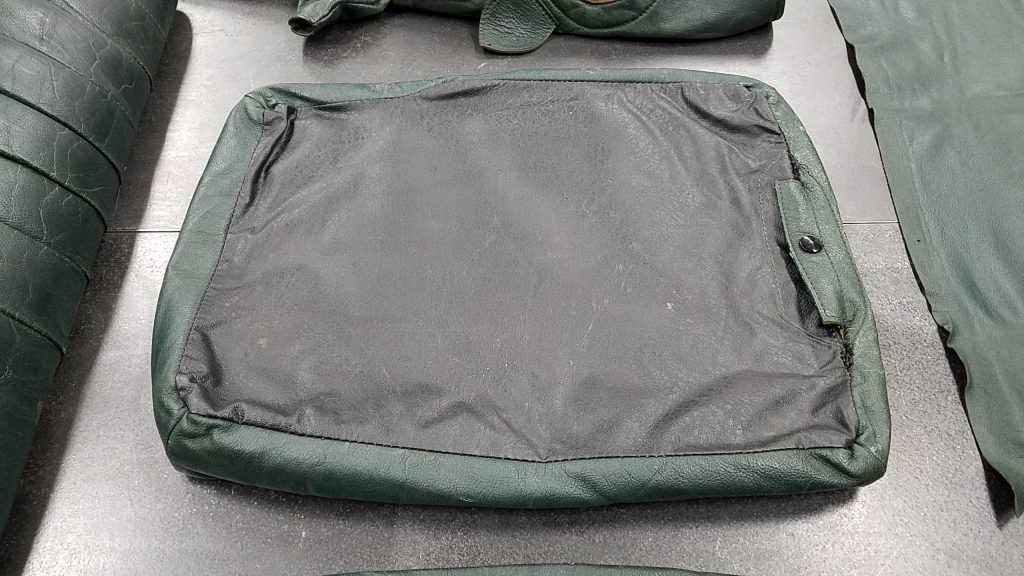
The underside of the squabs is a vinyl canvas of some sort. There’s a flap in the back to insert your Dunlopillow and inflate to your comfort level…said cushion is long gone, of course, they perished fairly quickly, from my understanding.
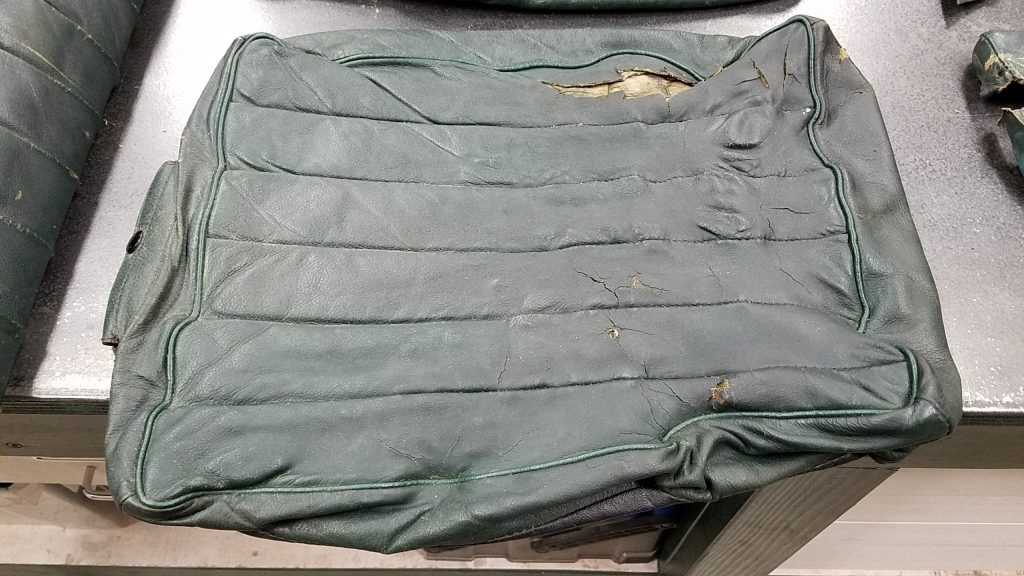
The left squab is a disaster, and there is no coming back. In addition to being hard as a rock, it was heavily painted at some point, and every pleat is torn.
To be clear, I love interior patina on olde cars. But I’m now questioning trying to work with this, though the reality may be I have no option, given my finances. But money aside, here are the issues with re-using this:
- All of the material is somewhat (in some cases quite) fragile
- The doors, quarters, and sill covers don’t really fit the new body as well as they might
- The left squab will have to be new, and I have big doubts that a material could be found which matches the existing leather well, so that cushion would always look out of place
An interior kit for this car is $3,000 from Morgan Spares. I have no idea what is included, what the materials are, how accurate it is, or how much extra money non-black would be. Rutter in the UK offers a kit for about 1900 pounds, but it’s not clear if it would be at all suitable for my car, the one illustrated is for a later machine.
That’s a bunch of money, either way. (Pathetic for a 50-something to say, but there we have it.) On the other hand, I am willing to bet having someone make just the left squab would be $1,000, if my experience at upholsters is typical. Enough leather to do this myself, not counting buying and learning to use an industrial sewing machine, would be about $1,000…I think there is about three hides worth in here. (Plus there is the long delay in getting up to speed with the process.)
Anyway. More to think about, just what I needed.
I think my next post will explore the disaster repair done to my left fender, and how I’m going to buy a welder and do it myself. I never, ever want to farm out work again, I’ve decided. Do most people simply not care about their work?
